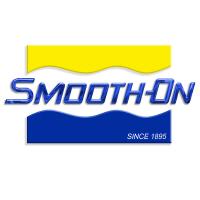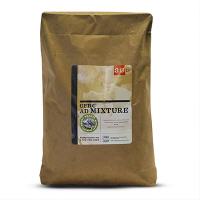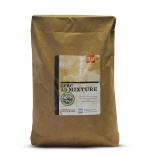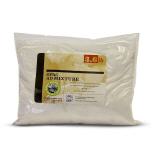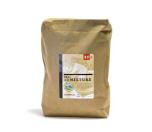Admixture
Buy Smooth-On at FormX
Smooth-On is one of the worlds leading manufaturers 3D modeling materials such as mold-making, casting and special effects materials but also industrial casting resins, adhesives and equipment. FormX is main distributor of Smooth-On products in Europe.
Buddy Rhodes GFRC Admixture is a polymer modified, multi-component admixture. When added to locally sourced Portland cement and sand, it will provide strength, premium working characteristics, and durability
similar to our GFRC Preblended Mix. The blend is a carefully proportioned mix of chemical and mineral admixtures that combat the inherent weaknesses in concrete. The use of this admixture eliminates the need for curing polymers, pozzolans, defoamers, and shrinkage reducers. Highly refined in composition, this admixture provides maximum performance at minimal weight, reducing shipping costs and other concerns related to comparable products
Preparation - Getting Ready to Mix Have all ingredients assembled before you start. Wear vinyl or nitrile gloves and protective eye wear. Use an accurate scale for weighing components. Use materials between 10° C - 32° C. Colder temperatures will slow the reaction and warmer temperatures will accelerate it.
Once the temperature of the mix reaches 21° C, the reaction begins to accelerate. Using a laser thermometer to monitor, keep the temperature of the mix near 15° C. In warm environments, substitute up to 50% of the water with ice. GFRC Admixture has a shelf life of 1 year after purchase if kept in a dry, moisture free environment. Once opened, the material should be used as soon as possible.
Mixing Instructions - Use clean, potable water and clean mixing vessels. Use a handheld mortar mixer to mix. If mixing on a regular basis or for a large project, investing in a vertical shaft mixer may be justified.
• Combine water and pigment together and mix thoroughly.
• Add 50% of the water reducer to the water. Slowly add dry ingredients while continuing to blend. Start with sand, followed by GFRC Admixture and finallyPortland cement.
• Add remainder of water reducer. Blend until homogeneous.
For Backer Mixes:
After initial blending, slowly add Alkali Resistant (AR) Glass Fiber to the mix. Blend until homogeneous. Temper with water reducer as needed for desired consistency. Note that mixing too long or at too high a speed after fiber has been added can damage the fiber, resulting in placement issues and reduced strengths.
If Using Acrylic Fiber:
Overdosing acrylic fibers can easily choke up a concrete mix. Some users find blending the fibers in the mix water first provides optimal dispersion. Others prefer to slowly blend the fibers into the concrete slurry
later in the mixing process. Some experimentation is suggested to determine the best solution for a specific mix design.
Casting Techniques
Spray Technique - The spray technique is accomplished in two stages: a surface layer (face/mist coat) without fiber, followed by a reinforcing layer (backer mix) containing AR Glass Fibers. The consistency of the sprayable mist coat should be similar to a milkshake. It should be fluid enough to move through a hopper gun, but not so fluid that it slumps down from vertical formwork. This is made easier with a little practice. For the backer, you can make a fluid mix that pours over the mist coat, or you can make a thicker mix that is applied by hand. A thicker mix is especially useful for vertical walls. The key to the spray technique is making sure
that there is good bonding between layers. Timing is critical. Before applying the backer mix, make sure that the mist coat has not fully dried out, but is firm enough that the backer mix won’t push through the surface and show fiber in your finished piece.
SCC Technique - SCC (Self Compacting/Consolidating Concrete) is a mix that consolidates with minimal mechanical force. This mix is cast directly into the forms, often without a face mix. This is a great method for rapid casting of flat panels. The key to success is keeping in mind that the glass fibers are just below the surface. Too much polishing and grinding on this mix will expose fibers and be unsightly. Many people have replaced the glass fiber with 0.6 lb of PVA 100 fibers (or a combination of PVA100 and PVA15),allowing the ability to polish a bit further without having the fibers be as noticeable.
Trowel Technique - This technique is used to make pieces with the finished side facing up. Forms can be built to make precast elements, or cast in place countertops. Cast the material into the forms and use a wood or magnesium float to level the product with sweeping or circular motions. This initial processing stage can last several hours, so be patient. Once the surface is firm, a steel trowel may be used to accent the top further. Caution: If a steel trowel is used too soon, air may be trapped beneath the surface, creating a weak, “egg-shell” layer that may flake off once cured.
Curing
In order to ensure that concrete reaches its maximum potential, keep the concrete warm and moist while curing. Ambient temperature should be kept at a minimum of 10°C. A layer of moist felt or fabric followed by plastic sheeting will keep the moisture from escaping. This is often covered again by blankets or insulation to keep the heat from leaving the matrix. This is especially important on troweledfinishes, since plastic placed directly on them is likely to leave discolorations. Demold after 24-48 hours, depending on shop conditions.
Polishing
Polishing can be done wet or dry. We recommend wet polishing as it will provide a finish true to the grit used and it reduces the risk to your health. To maintain the cream layer, lightly polish the concrete using pads that are 200 grit or higher. The higher grits produce higher sheen. To expose your sand (salt and pepper look) orany decorative aggregate, begin grinding with coarser grit pads, progressing to finer grits until reaching the desired sheen and aggregate exposure.
Sealing
Concrete is an inherently porous material and needs to be sealed for particularenvironments and uses. Choose the sealer that best fits the needs of the finishedpiece and the skill level of the person applying it. Buddy Rhodes offers a variety of sealer options, which can be found on our website.
